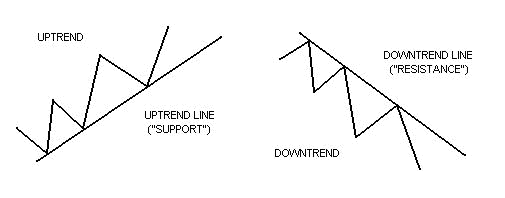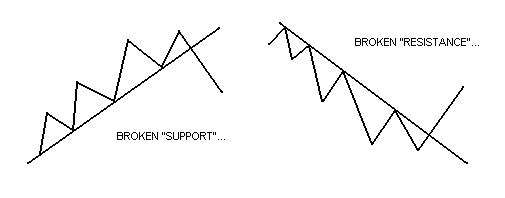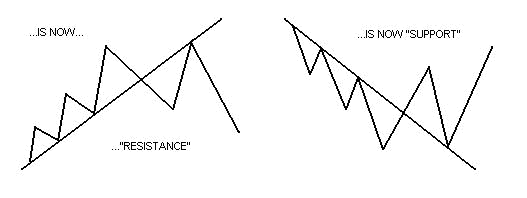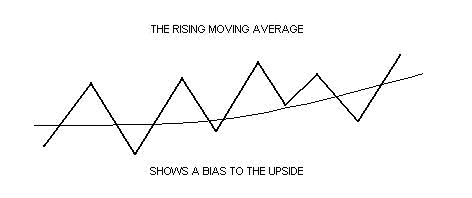A trend can be defined as the direction in which the market is moving in. When the supply of a commodity or stock is greater than the demand, the trend will be down as there are more sellers than buyers. When the demand is greater than the supply, the trend will be up as there are more buyers than sellers. (See volume.) If the forces of supply and demand are nearly equal, the market will move sideways. Eventually, when new information enters the market, it will begin to trend again, either up, down or perhaps sideways still, depending on how that information is viewed; positive (bullish), negative (bearish) or neutral (sideways.) It's important to remember that money can be made or lost in bullish (uptrending), bearish (downtrending) and neutral (sideways - trending) markets. Trendlines help in determining what trend is in place.
If a market is moving up, a line can be drawn connecting each successive higher bottom. This is an uptrend line or 'support'. As long as the market remains on or above this line, the uptrend is intact. If a market is moving down, a line can be drawn connecting each successive lower top. This is a downtrend line or 'resistance'. As long as prices remain on or below this line, the downtrend is intact.
In general, once a trendline is broken, the trend which was previously in force is considered over, or at least in pause. It should be noted that when an uptrend line or 'support' is broken, it then acts as 'resistance'. Likewise, if a downtrend line or 'resistance' is broken, it then becomes 'support'.
|



